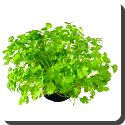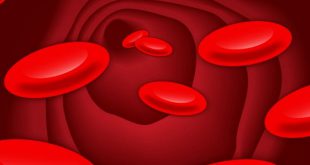 Coriander — Coriander, Coriandrum sativum, also commonly called cilantro, is an annual herb in the family Apiaceae. Coriander is native to southwestern Asia and west to north Africa. It is a soft, hairless plant growing to 50 cm [20 in.] tall. The leaves are variable in shape, broadly lobed at the base of the plant, and slender and feathery higher on the flowering stems. The flowers are borne in small umbels, white or very pale pink, asymmetrical, and with the petals that point away from the centre of the umbel being longer (5-6 mm) than those pointing to the middle of the umbel (only 1-3 mm long). The fruit is a globular dry schizocarp 3-5 mm diameter.
Coriander — Coriander, Coriandrum sativum, also commonly called cilantro, is an annual herb in the family Apiaceae. Coriander is native to southwestern Asia and west to north Africa. It is a soft, hairless plant growing to 50 cm [20 in.] tall. The leaves are variable in shape, broadly lobed at the base of the plant, and slender and feathery higher on the flowering stems. The flowers are borne in small umbels, white or very pale pink, asymmetrical, and with the petals that point away from the centre of the umbel being longer (5-6 mm) than those pointing to the middle of the umbel (only 1-3 mm long). The fruit is a globular dry schizocarp 3-5 mm diameter.
The name coriander derives from French coriandre through Latin coriandrum. John Chadwick notes the Mycenaean Greek form of the word, koriadnon, “has a pattern curiously similar to the name of Minos’ daughter Ariadne, and it is plain how this might be corrupted later to koriannon or koriandron.”
All parts of the plant are edible, but the fresh leaves and the dried seeds are the most commonly used in cooking.
Coriander leaves were formerly common in European cuisine but nearly disappeared before the modern period. Today Europeans usually eat the leaves and stems only in dishes that originated in foreign cuisines; in Portugal, however, it is still an essential ingredient in many traditional dishes. To use the stems, separate cilantro leaves from stems. Chop stems finely and add them to your dish a minute or two before serving, just giving them time to warm up and disperse their flavor. The leaves will remain beautiful and fresh if you use them to garnish individual plates.
Coriander has been used as a folk medicine for the relief of anxiety and insomnia in Iranian folk medicine. Experiments in mice support its use as an anxiolytic. Coriander seeds are also used in traditional Indian medicine as a diuretic by boiling equal amounts of coriander seeds and cumin seeds, then cooling and consuming the resulting liquid. In holistic and some traditional medicine, it is used as a carminative and for general digestive aid.
 Kids Portal For Parents India Kids Network
Kids Portal For Parents India Kids Network






